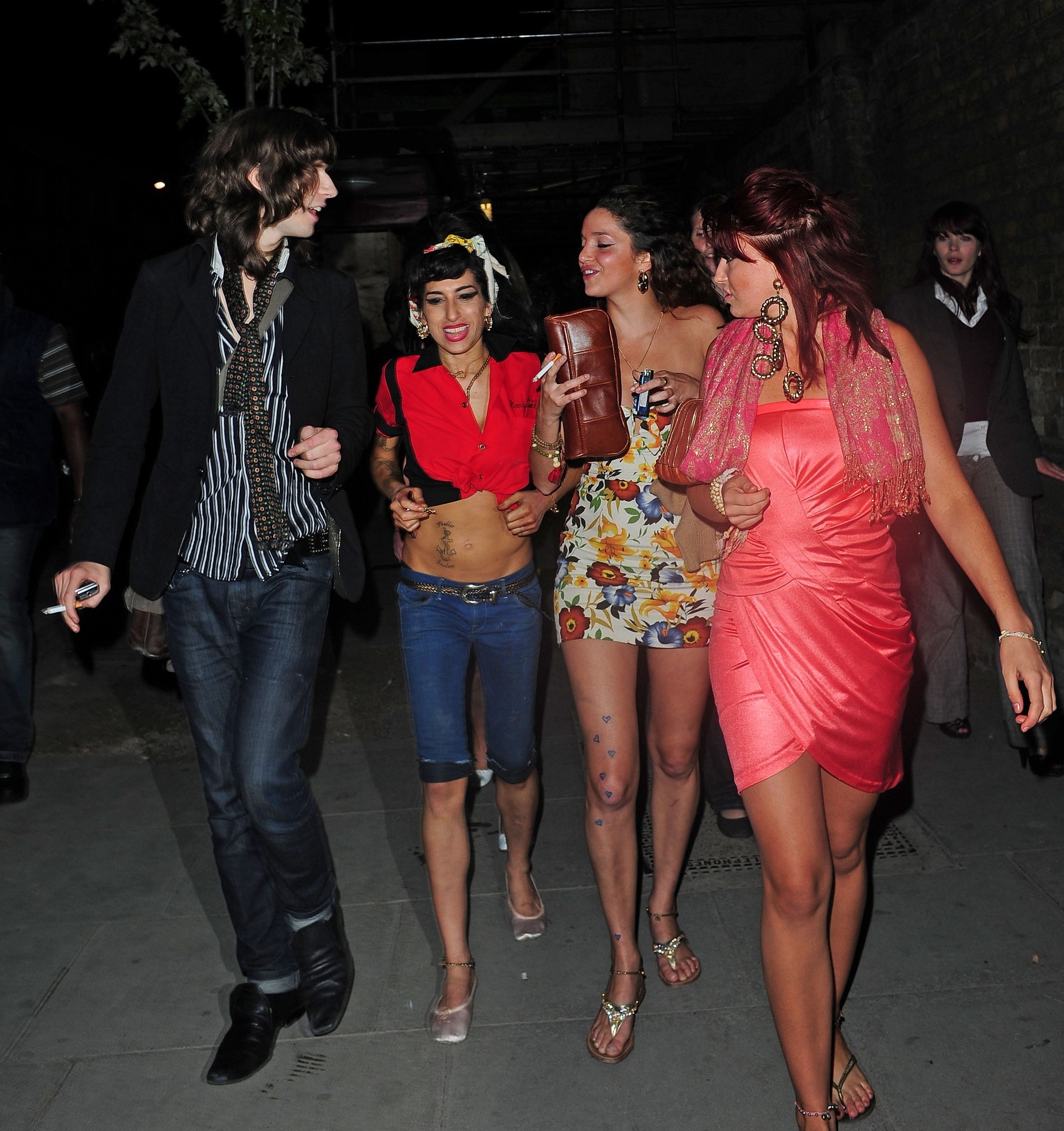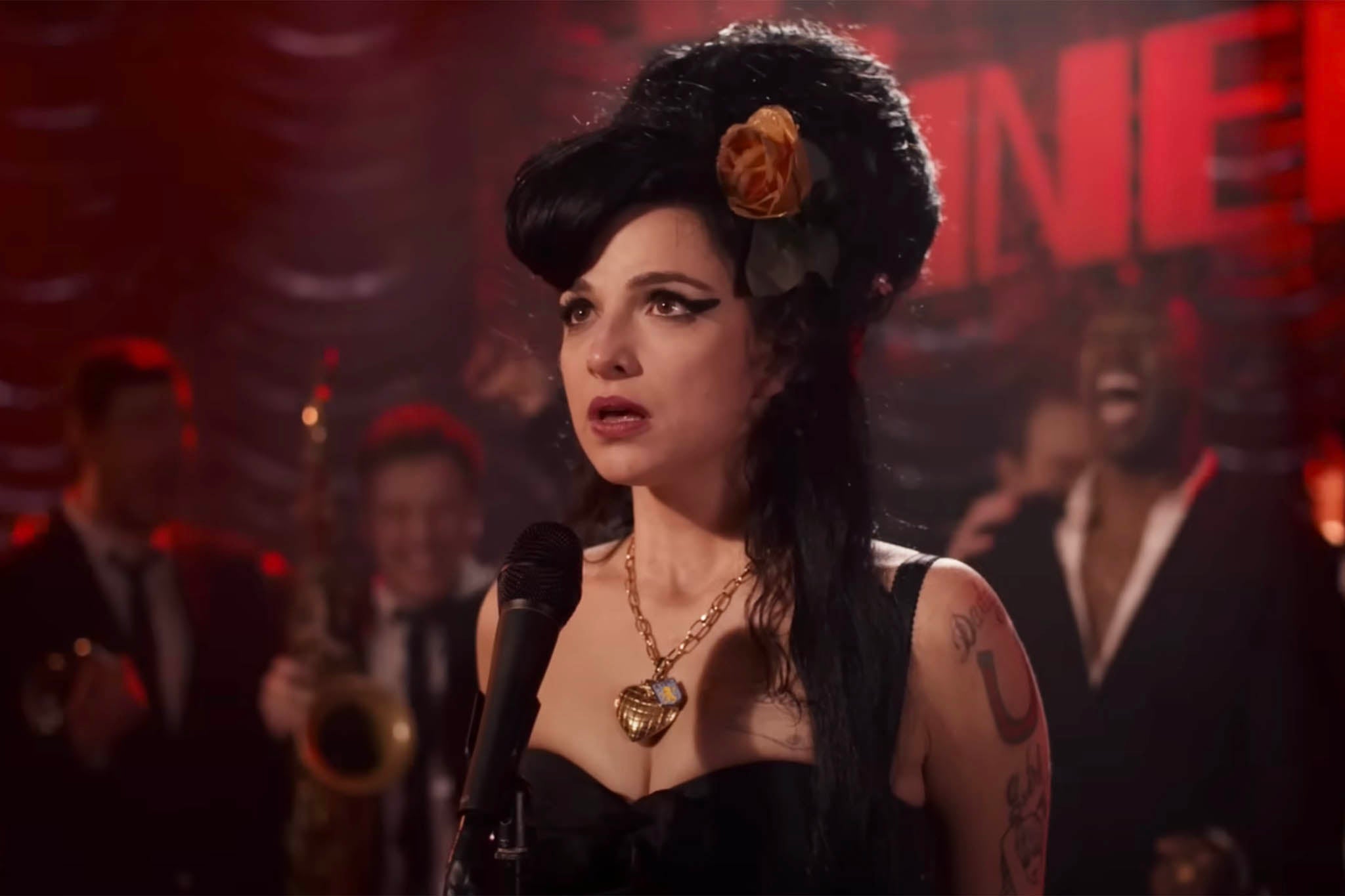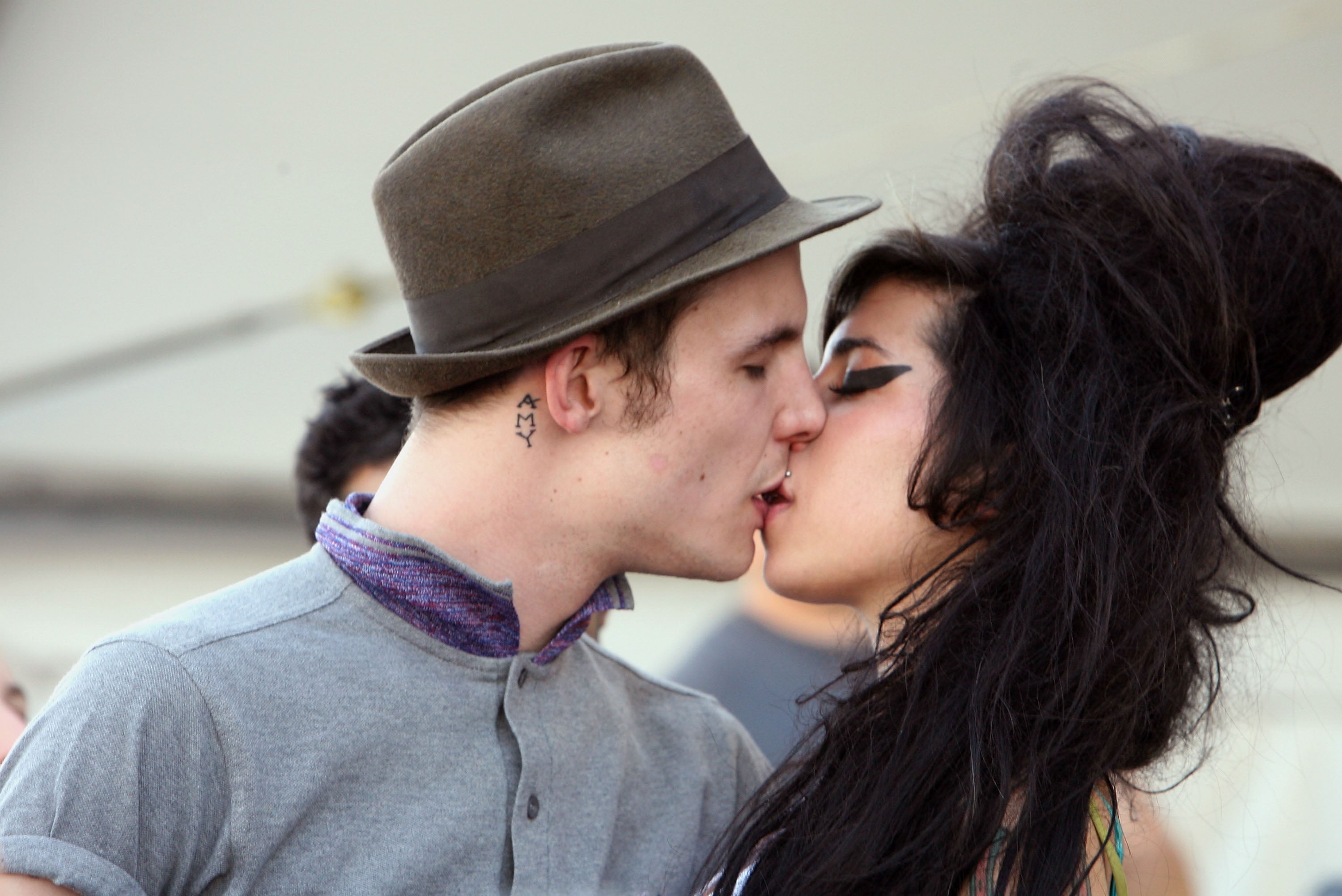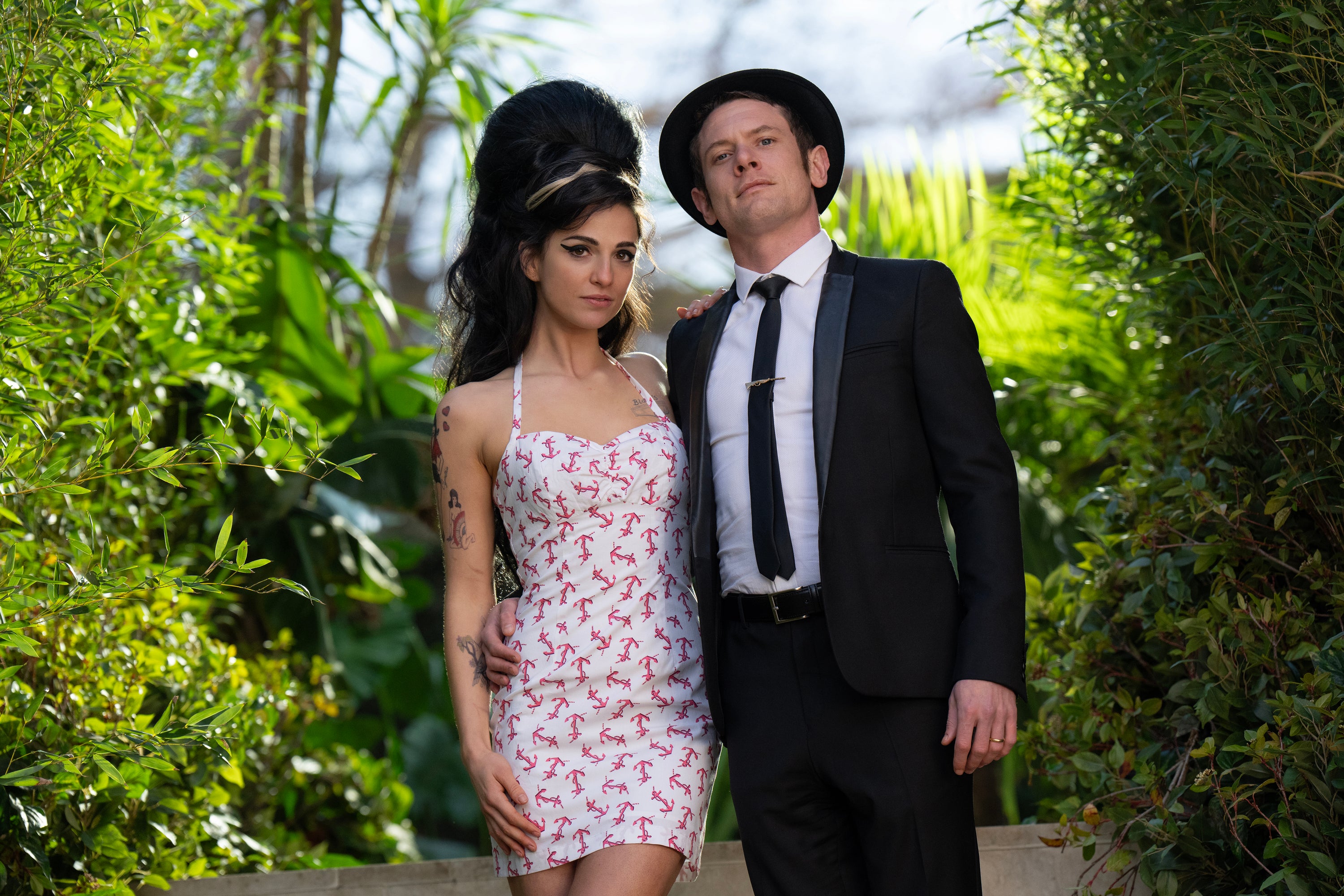‘I was Amy Winehouse’s close friend – to know the real her you need to understand her relationship with women’
Shooting pool in Camden pubs, swapping hair and makeup tips and using laughter to hide the pain – that’s the Amy Naomi Parry remembers. Here, the pop star’s one-time housemate, good friend and personal stylist reflects on those carefree days and argues why to know the real Amy, you have to look beyond the men in her life…

I was at a particularly chaotic music festival when I heard that my friend Amy Winehouse had died. It was a hot day in July and it is a memory that still haunts me. Before word spread through the crowds, a friend pulled me aside to tell me the news. The shock felt like a physical assault and left me winded, pushing me to the muddy ground. I would never see Amy again. She was just 27 years old.
Our friendship began in 2005 at Freedom Bar in Soho, where we bonded over big hair, an eclectic style and a fondness for pleasure-seeking that hid deeper issues that lay beneath.
I was studying fashion design at the London College of Fashion, and she had already released her first critically acclaimed album, Frank. Throughout our six-year friendship, we assumed many roles – from neighbours and work colleagues to pool opponents, night owls and even housemates. We travelled together, cooked for one another, plucked one another’s facial hair, exchanged our clothes and makeup, vented about trivial issues, and even, on occasion, borrowed a toothbrush.
Young female friendships are a whirlwind of all-encompassing openness and emotional vulnerability, characterised by unwavering loyalty and support. Rarely did we touch upon our inner struggles, mainly because they were hard to articulate, but when we tried we treated them with the facetious irreverence you could expect from two young girls oblivious to how unresolved issues can manifest untreated.
What was so endearing about Amy was her brazen confidence and ability to effortlessly make friends wherever she went. Such self-assuredness was something I had lacked growing up and I was energised by hers.
In our Camden stomping ground, where I’d moved to from halls of residence in south London, she knew everyone on the street by name – from the market traders to the pub landlords, vintage store shop assistants and most of the local homeless people.
She could brighten up anyone’s day and make them feel special by engaging in a meaningful chat. It was a skill she kept until the very end.

Amy was still relatively unknown, and we were able to enjoy carefree moments with our group of like-minded friends. We rarely discussed her work, and it was just a given that she would disappear for brief periods of time only to resurface in The Good Mixer or The Hawley Arms – looking for a game of pool and a bit of mischief.
My exposure then to Amy the “artist” was limited to her occasional London shows. At the time, Camden was a melting pot of musical subcultures with a close-knit scene of musicians, young club promoters, DJs and famous people’s kids.
Everyone knew each other, which meant we slipped effortlessly between gig venues and club nights. This was our playground and where, I think, Amy felt most herself and most at home.
Having dropped out of university, I was working as an assistant fashion stylist on editorial shoots and building my own client list. Completely unprompted in 2006, Amy asked me to be her stylist, which was a surprise, but it added another layer to our friendship.
At The Brit Awards in 2007, she won two major accolades as a female artist and our collaborative efforts finally paid off in establishing a defining style. This marked a pivotal moment, and I felt a mix of apprehension and excitement as I noticed a palpable shift in how people were behaving in her presence. However, I could never have grasped the profound implications it would have.

Our breezy days of easy socialising were replaced by every outing becoming an ordeal. The lines between famous Amy and the human being were becoming blurred and her personal boundaries were being overstepped by the public and press at every opportunity. This was further intensified as Amy’s romantic life became more destructive.
Her relentless pursuit of love, especially from those who often seemed to let her down, always overshadowed any rationale or solace her closest friends could provide. Amy loved her female friends and told us so at every opportunity. However, her relationships with men presented a significant vulnerability.
Amy’s rekindled relationship with Blake Fielder-Civil is the most famous, but to me, it seemed to be a template for a lot of her dynamics with a lot of men in her life who I often felt were unsuitable, unavailable and/or manipulative.
My closest encounter with Blake occurred after one of Amy’s performances at The Old Blue Last in 2005. Blake had chosen his former girlfriend over Amy and, heartbroken, she insisted that we go and peer through the window of The Griffin pub, where he was working at the time. It seemed like self-flagellation and after much protest, we allowed her a few minutes before dragging her away to give her a pep talk.

It was moments like these where she almost seemed to indulge in her pain. But we were her friends, so we stood by patiently on the sidelines; there to help pick up the pieces when she was ready. This dynamic has resonated within a lot of my female relationships and I have a lot of experience in trying to get through to someone who isn’t yet receptive to help that can often feel like banging your head against a brick wall.
By the time she was shooting the music video for “Tears Dry on Their Own” in 2007, our interactions were more work-focused as Amy was now deeply engrossed in her relationship with Blake. By now, she was a newly married woman balancing a demanding work schedule and the looming prospect of Blake’s court case for grievous bodily harm against a bar owner.
Speculation began circulating around Blake’s battles with substance abuse and how they were having a negative influence on Amy. Those closest to her were getting more worried, but Amy was strong-willed and for every person that was trying to help there was someone else enabling her behaviour and complicating the situation.
The lines between famous Amy and the human being were becoming blurred and her personal boundaries were being overstepped by the public and press at every opportunity
It wasn’t until Blake went to jail that I was able to spend more time with her, but as her fame had grown, so had her inner demons, which became more apparent to the world thanks to relentless tabloid headlines.
On the few occasions, I got the opportunity to be alone with her, I would try and broach the subject – sometimes breaking down and pleading with her because I was so scared that she was going to accidentally end her life.
But whatever love or help I had to offer, it fell on deaf ears with her citing “she was going to be fine”. She was simply unwilling, or maybe unable, to confront the depth of her troubles and the impact they were having. From then on, it became a familiar pattern, with alcohol and self-harm, that would repeat itself until 23 July.
Amy’s death was a global story; her face was on every front page and thousands of fans made a pilgrimage to her house in Camden. It was hard to process at the time. Even her funeral was a circus – the same hordes of paparazzi intruding into her death, just as they had done into her life.

But Amy was so much more than the chaos that swirled around her and I was determined to change the narrative; to shift the focus from her flaws to her creative genius. This was the essence of Amy and why I came up with the idea for the “Beyond Black” project.
With the help of some exceptional people, including some of her other dearest friends, I threw my efforts into putting on exhibitions and events and published an art book to celebrate who she was beyond the tabloid story of her life.
I was still in contact with her dad, Mitch Winehouse, who asked me to join in the discussions about a posthumous film of her life that was in the early stages of its development. Reluctantly, I agreed as I thought it would help ensure that the narrative was accurate and could assist with any important details that a parent or outsider might not be privy to. Our relationship has since soured and I had no further input into the film.
It’s difficult to predict what Amy's reaction would have been to the new biopic, as she was selective in her choices of commercial ventures, often declining opportunities that others might embrace, such as perfume deals and brand partnerships.

The film has an impressive cast, and I am hopeful that they will portray her authentically. However, the noticeable absence of her core female friendships makes me feel sad given how important they were to the narrative of this brilliant woman. It makes me worry her story has once more been dominated by the male relationships she had in her life.
Approaching 13 years since her passing, I can now listen to Amy’s music and watch videos of her without the feeling of crushing loss. It is heartwarming to see the devotion and support that she gets from her army of fans, something she would have loved.
Today, I’m still in London, but I am no longer styling musicians, focusing more on design and other creative projects. My own life is a lot less chaotic in my late thirties, and I think as a society we have much more understanding about mental health, I understand myself so much more and in turn, Amy.
However, her life was profoundly complex, richly layered, and far from ordinary. The true essence of her experiences is unlikely to be fully captured in a single feature film, a singular perspective in a book, or even within the confines of one article penned by a friend. I look forward to when we can collectively find solace in allowing her to rest peacefully.





Join our commenting forum
Join thought-provoking conversations, follow other Independent readers and see their replies
Comments